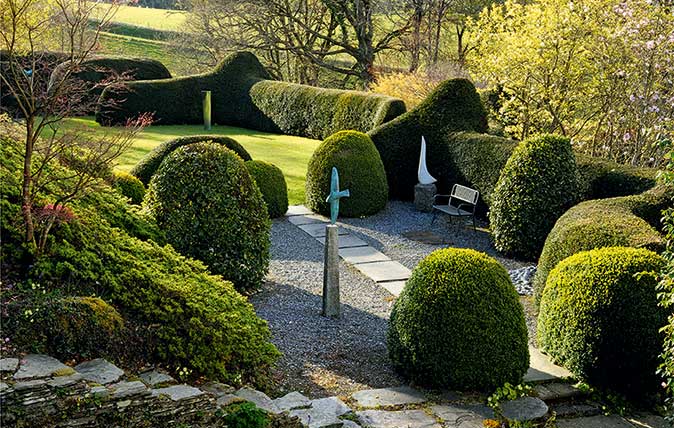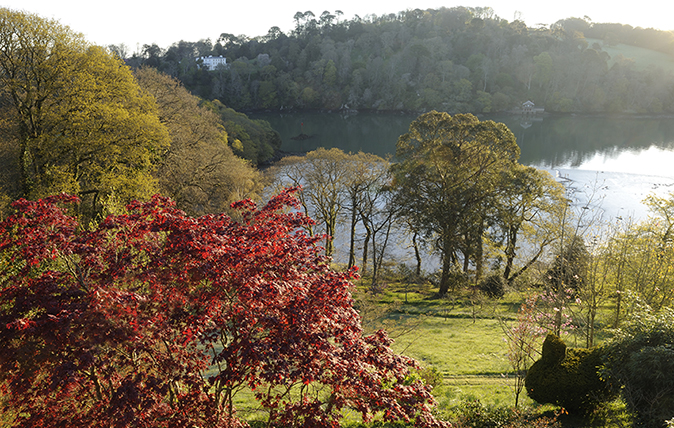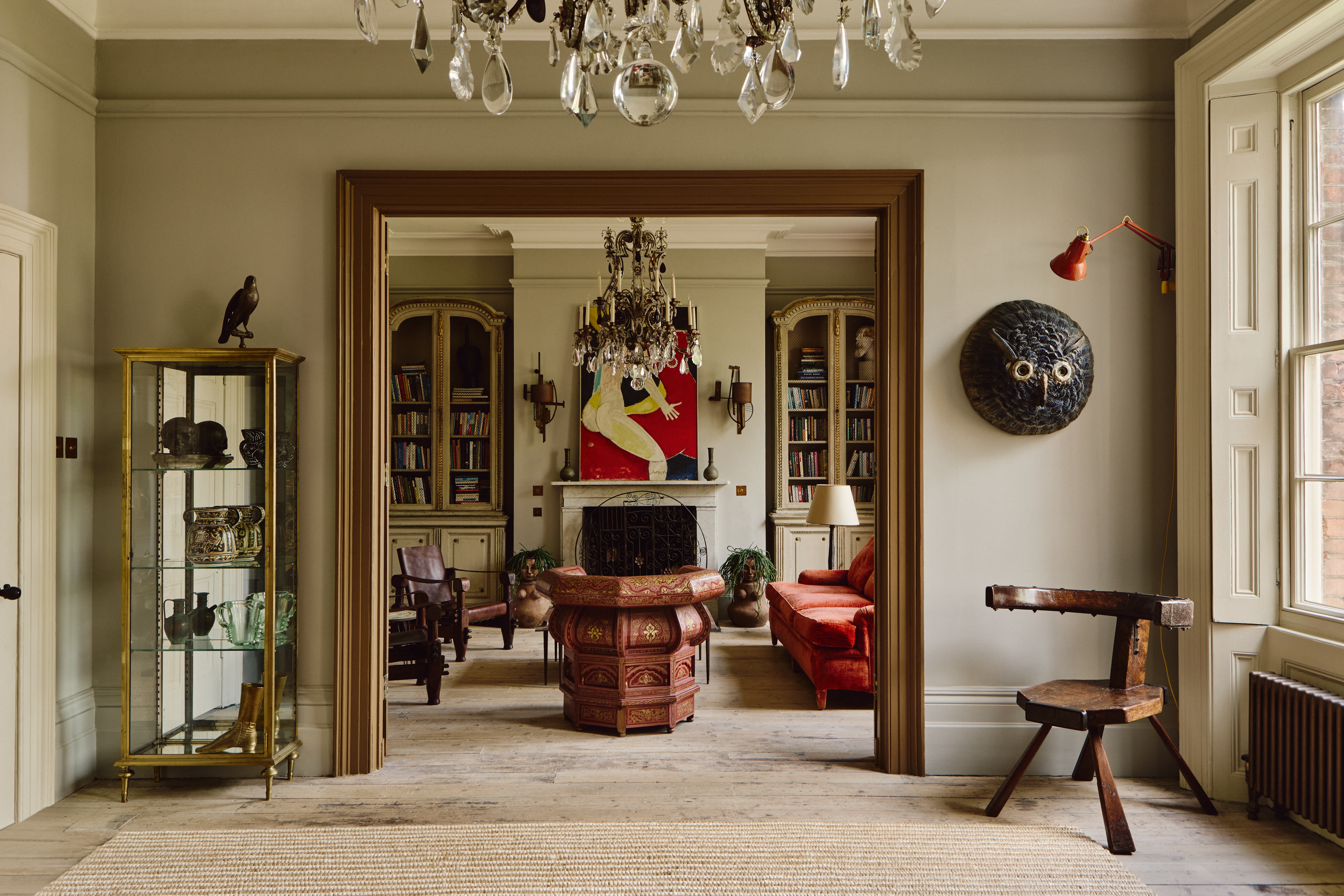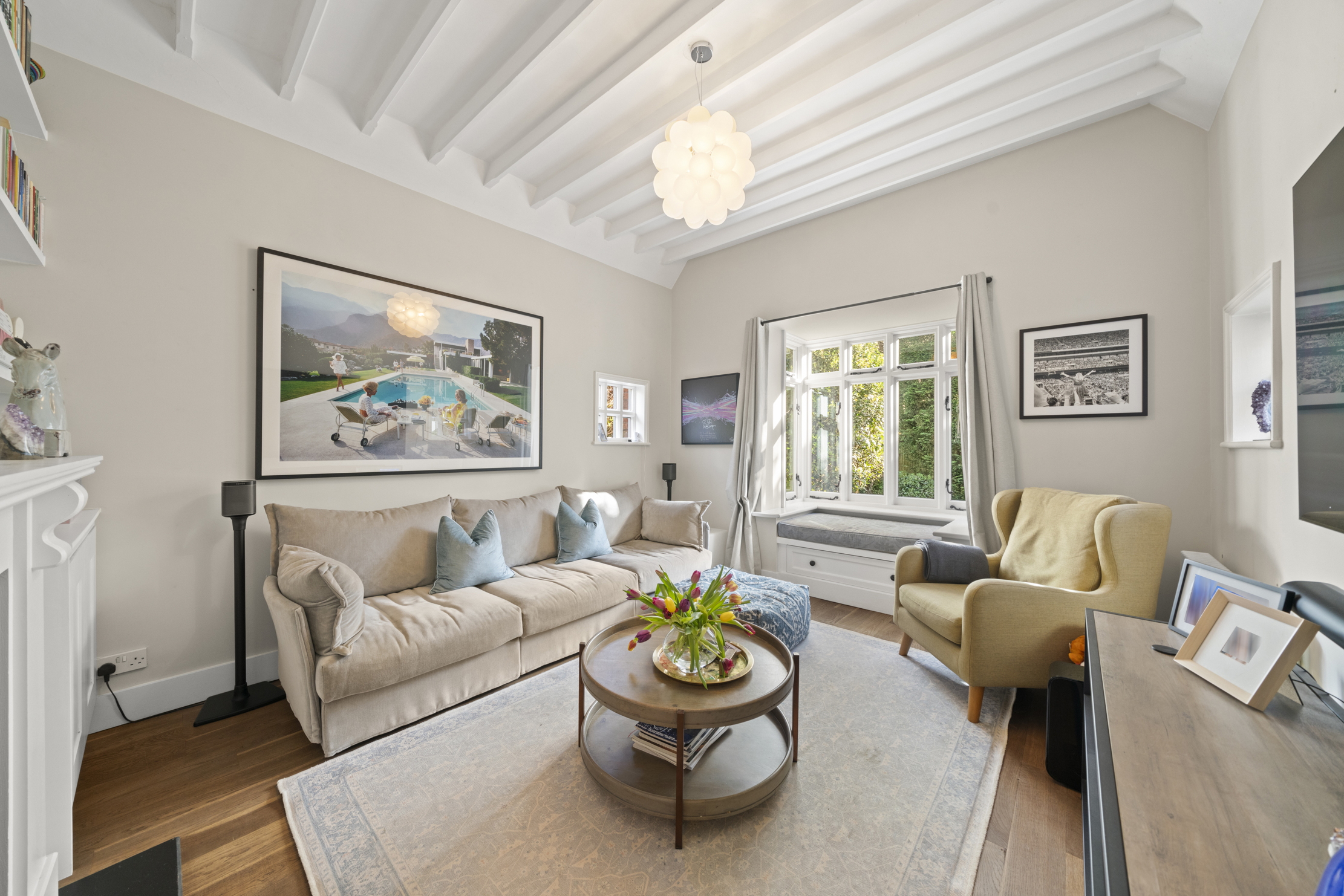How to create the perfect setting for outdoor art, as at Hamblyn’s Coombe
Tim Longville is guided through the hillside garden of sculptor Bridget McCrum.


When the late Robert McCrum left the Navy in the 1970s, he worked at first in London. After a few years, however, he and his wife, the sculptor Bridget McCrum, felt the need for a more permanent base on land, for which they had clear specifications in mind: it had to be near water and have enough land to allow Capt McCrum to give full rein at last to his passion for plants.
It also had to be quiet and isolated enough for his wife to work undisturbed on her sculptures.

Hamblyn’s Coombe, a 19th-century woodman’s cottage with later extensions, a mile or more outside the village of Dittisham on the River Dart in south Devon, ticked and double-ticked all those boxes.
Its seven acres are perched high on the steep wooded slopes rising from the broad reaches of the river below and can only be reached by a daunting road-cum-track running along the fringes of a wood. There were also outbuildings easily converted into Mrs McCrum’s studio.

From the beginning, garden-making and sculpture-making (and placing) went hand in hand.
The result is often described as a sculpture garden, but that suggests that the sculpture is, as it were, the dominating soloist, the garden the mere accompanist, but that isn’t (and was never meant to be) the case. Instead, this is a collaboration of two equal partners, just as, in making it, the McCrums collaborated on the planting and even on the placing of the sculptures.

As Mrs McCrum explains their method: ‘Robert would develop a passion for a group of plants—acers, say, or cornus or hydrangeas—and would collect rare examples of each. Then, I would block-plant between his rarities.’
Sign up for the Country Life Newsletter
Exquisite houses, the beauty of Nature, and how to get the most from your life, straight to your inbox.
Smiling, she adds: ‘Not that I would ever claim to be an expert in the way that he was. When people come round the garden now, I ask them what my plants are!’

From the beginning, they had clear ideas about the sorts of plants they wanted — and the sorts they didn’t. ‘The plants here have to fit in with this remarkable landscape. And some plants don’t: they just look too suburban.’
Others, they thought, just looked too cultivated, so there are no cultivated forms of herbaceous plants here, only wild examples of plants such as ferns, epimediums and rodgersias, used in dense, large-scale, ground-cover plantings.

Their ideas about colours were equally well defined. ‘We made it a rule that we would include no harsh yellows, bright oranges, shocking pinks or puces.’
Red itself, however, was approved of, as evidenced by a spectacular group of vividly red-flowered Embothrium coccineum, which prompted a reminder of Corot’s comment that one splash of red can light up a whole scene.

Even when they knew exactly what they wanted to plant, growing it here was never easy. ‘There’s so little of our acid soil and so much shillet [shale] in and under what little we’ve got that most of the planting was done with a pickaxe.’ However, they were determined to work with what they’d got, rather than import soil from elsewhere.
They worked with what they’d got in other ways, too. ‘Right from the beginning we allowed — indeed, encouraged — the wildflowers, which wasn’t usual in 1984.’

By and large, they also kept the natural contours of the landscape, modifying the slope as little as possible, which involved creating a network of paths snaking to and fro across it, sometimes through dense plantings of trees and shrubs, sometimes through open glades of long grass filled with those encouraged wildflowers.
That inevitably means that in places, particularly in the lower reaches of the garden, down towards the little bay known as Parson’s Mud, the paths can be ferociously steep.

As for the placing of the sculptures, there was nothing pre-determined about it. That is, there were no spaces reserved for specific sculptures. Usually, the planting came first and then ‘you just had to find the right place for the right piece. If a sculpture isn’t positioned perfectly, it looks terrible’.
The right place meant somewhere that ‘gave a piece scale’, with trees and shrubs around it of a similar size. Sometimes, those had a similar shape and texture, sometimes they had deliberately contrasting ones.

A good example is a massive, blocky sculpture, based on the shape of a temple from 3500BC on Gozo, where Mrs McCrum has another house, which is placed among feathery tree ferns and the solid bulk of Rhododendron macabeanum. (‘I bought the tree ferns as a present for Robert, out of the proceeds of a successful sculpture exhibition’).

As the planting wasn’t just designed to be sympathetic to Mrs McCrum’s sculptures but was also designed to be sympathetic to the landscape, the planting, although intended to look ‘natural’, was positioned and sometimes shaped with a good deal of thought and care.
Good examples are the shaped buckthorn and the mini-grove of white birches down by the river and the rounded hedges and box mounds that help define the miniature compartments of the relatively flat area immediately to the west of the house, where the curved shapes were designed to echo the meanders of the river and the rounded tops of the surrounding hills.

Mrs McCrum is also keen to point out that, although this is a garden created out of a clear set of aesthetic ideas, it had no overall plan. ‘We knew the way we wanted it to look, but we didn’t try to impose all our ideas on it at once. We allowed it to develop over time, at its own pace.’ The irony, as she wryly points out, is that, nowadays, she and her devoted part-time helper, who’s been here for 25 years or more, spend most of their time thinking about necessary thinning out rather than about new plantings.
The garden at Hamblyn’s Coombe, Dittisham, Devon (mccrum.sculpt@waitrose.com), opens for visitors between March and November by arrangement. Bridget McCrum’s work can currently be seen at Messums Fine Art (www.messums.com) and at Messums Wiltshire (www.messums-wiltshire.com)

Country Life is unlike any other magazine: the only glossy weekly on the newsstand and the only magazine that has been guest-edited by HRH The King not once, but twice. It is a celebration of modern rural life and all its diverse joys and pleasures — that was first published in Queen Victoria's Diamond Jubilee year. Our eclectic mixture of witty and informative content — from the most up-to-date property news and commentary and a coveted glimpse inside some of the UK's best houses and gardens, to gardening, the arts and interior design, written by experts in their field — still cannot be found in print or online, anywhere else.
-
 ‘It had the air of an ex-rental, and that’s putting it politely’: How an antique dealer transformed a run-down Georgian house in Chatham Dockyards
‘It had the air of an ex-rental, and that’s putting it politely’: How an antique dealer transformed a run-down Georgian house in Chatham DockyardsAn antique dealer with an eye for colour has rescued an 18th-century house from years of neglect with the help of the team at Mylands.
By Arabella Youens
-
 A home cinema, tasteful interiors and 65 acres of private parkland hidden in an unassuming lodge in Kent
A home cinema, tasteful interiors and 65 acres of private parkland hidden in an unassuming lodge in KentNorth Lodge near Tonbridge may seem relatively simple, but there is a lot more than what meets the eye.
By James Fisher